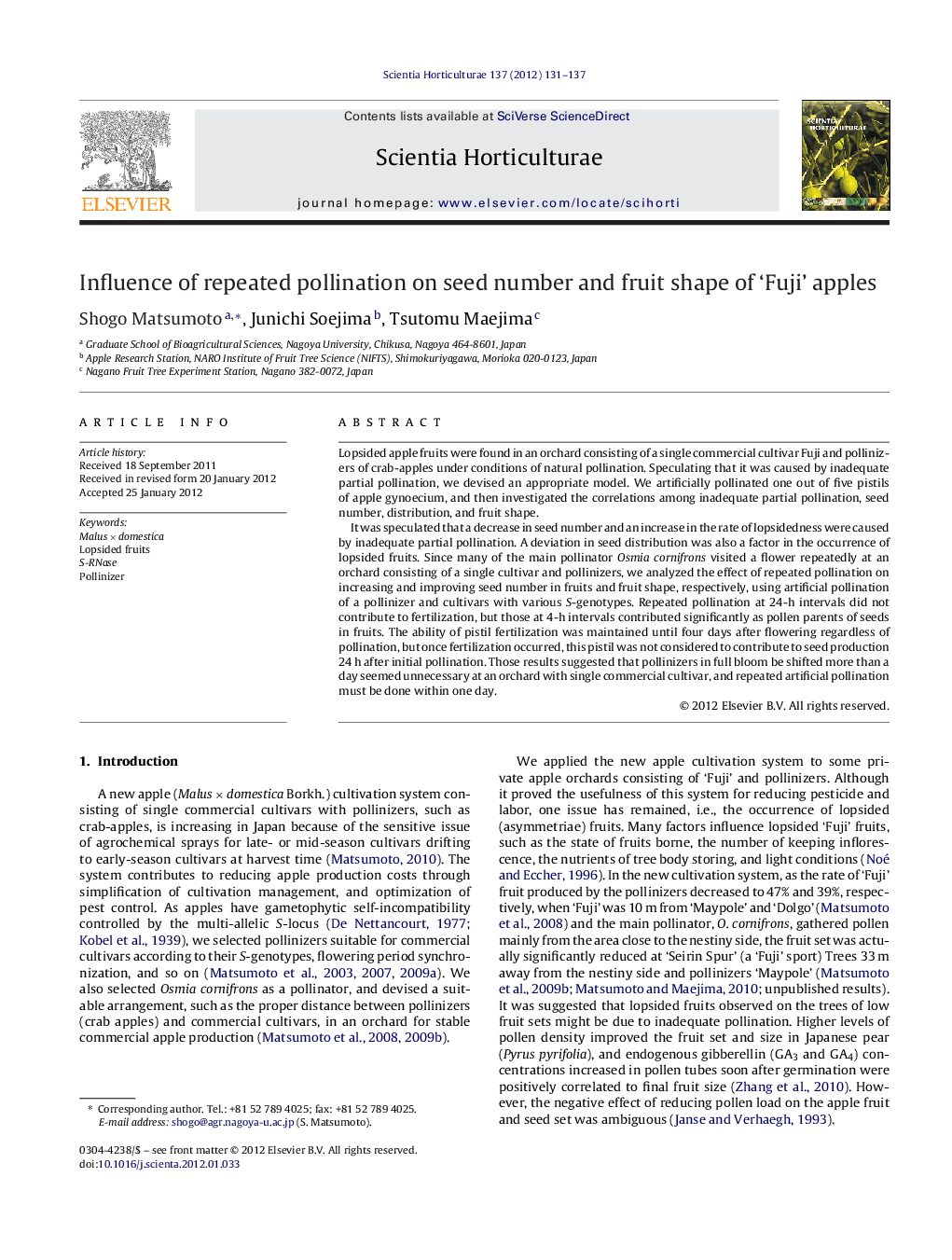| Article ID | Journal | Published Year | Pages | File Type |
|---|---|---|---|---|
| 4567808 | Scientia Horticulturae | 2012 | 7 Pages |
Abstract
It was speculated that a decrease in seed number and an increase in the rate of lopsidedness were caused by inadequate partial pollination. A deviation in seed distribution was also a factor in the occurrence of lopsided fruits. Since many of the main pollinator Osmia cornifrons visited a flower repeatedly at an orchard consisting of a single cultivar and pollinizers, we analyzed the effect of repeated pollination on increasing and improving seed number in fruits and fruit shape, respectively, using artificial pollination of a pollinizer and cultivars with various S-genotypes. Repeated pollination at 24-h intervals did not contribute to fertilization, but those at 4-h intervals contributed significantly as pollen parents of seeds in fruits. The ability of pistil fertilization was maintained until four days after flowering regardless of pollination, but once fertilization occurred, this pistil was not considered to contribute to seed production 24Â h after initial pollination. Those results suggested that pollinizers in full bloom be shifted more than a day seemed unnecessary at an orchard with single commercial cultivar, and repeated artificial pollination must be done within one day.
Keywords
Related Topics
Life Sciences
Agricultural and Biological Sciences
Horticulture
Authors
Shogo Matsumoto, Junichi Soejima, Tsutomu Maejima,
